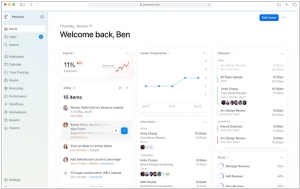Top 10 Unified Communications software
February 22, 2025 | Editor: Adam Levine
11
Enterprise communication software that integrates various channels, such as voice, video, messaging, etc.
1
Microsoft Teams is the chat-based workspace in Office 365 that integrates all the people, content, and tools your team needs to be more engaged and effective. Supports video meetings with up to 1,000 participants.
2
Zoom unifies cloud video conferencing, simple online meetings, and cross platform group chat into one easy-to-use platform. Our solution offers the best video, audio, and screen-sharing experience across Zoom Rooms, Windows, Mac, iOS, Android, and H.323/SIP room systems.
3
With Avaya platform that delivers rock-solid reliability and remarkable adaptability, you can support new collaboration capabilities, applications, and customer services immediately. Choose from more than 700 features and an ever expanding, customizable applications portfolio. Plus, count on unrivaled scalability and flexibility to support everything from click-to-dial video conferencing to sophisticated contact center systems, in locations from small branches to corporate headquarters.
4
With Cisco Unified Communications, your company can connect co-workers, partners, vendors, and customers with the information and expertise they need, access and share video on the desktop, on the road, and on-demand, as easily as making a phone call, facilitate better team interactions, dynamically bringing together individuals, virtual workgroups, and teams, make mobile devices extensions of the corporate network so mobile workers can be productive anywhere
5
A Complete Unified Communications Suite. Everything you need to break down boundaries and bring together your teams and customers. Powerful device management platform for hybrid workplace
6
Grandstream delivers a complete unified communications portfolio that empowers any business to create a powerful and easy-to-manage deployment solution. From IP voice & video, data, surveillance, conferencing and more, we provide the tools any organization needs to be successful.
7
Oracle Unified Communications is built to support carrier-grade reliability and availability, the portfolio enables enterprises to collaborate at a lower total cost than competing solutions and allows service providers to own the communication experience.
8
HCL Sametime (formerly IBM Lotus Sametime) is a client–server application and middleware platform that provides real-time, unified communications and collaboration for enterprises. Those capabilities include presence information, enterprise instant messaging, web conferencing, community collaboration, and telephony capabilities and integration.
9
Unify empowers today's anywhere workers with the tools to communicate and collaborate more productively. By synchronizing technologies, creating an engaging user experience and weaving communications seamlessly into the way businesses operate, we empower an increasingly mobile workforce to work better together.
10
Simplify the way you communicate - voice, video, messaging, collaboration, conferencing, meetings and call center - with one reliable and easy-to-use solution.
Important news about Unified Communications software
2024. Microsoft released Unified Teams app for work and personal use
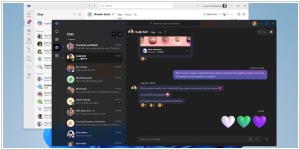
Microsoft has announced that its unified Microsoft Teams app for personal and work accounts is now broadly available. The new app combines the two previously separate Teams apps — one for work or education, the other for personal use — into one platform that Microsoft stresses can be easily switched between. To manage or access multiple accounts in Microsoft Teams, users can click on their profile picture in the app’s upper right corner. This will allow users to open work, personal and education accounts in separate, side-by-side windows within the same Teams application. Microsoft acknowledges that many users manage multiple Teams accounts. The company has simplified the process, allowing users to easily select their preferred account when joining a Teams meeting. Additionally, users can join as a guest without needing to sign in.
2021. 8x8 acquires UC-provider Fuze
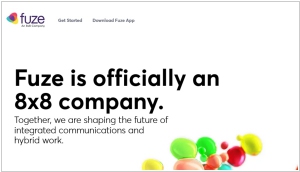
In the unfathomably vast cosmos of cloud communications, where nothing is quite as straightforward as it seems and everything has a knack for suddenly becoming inexplicably interesting, 8x8—a veritable intergalactic heavyweight in the universe of integrated cloud communications—has rather decisively decided to acquire Fuze, a fellow traveler and skilled conjurer of enterprise cloud-based communication spells, for the cosmic sum of $250 million. This strategic celestial maneuver is set to propel 8x8’s XCaaS (eXperience Communications as a Service, which sounds rather grand and probably is) innovation into realms hitherto uncharted while simultaneously expanding its galactic customer base and interstellar reach. As it happens, both entities are remarkably well-noted by those who chart such matters in the business galaxy: 8x8 has been labeled a Leader and Fuze a Visionary in the universally revered 2021 Gartner Magic Quadrant for Unified Communications as a Service, Worldwide. And if that doesn’t sound important, you probably haven’t been paying attention.
2019. Avaya partners with RingCentral to provide cloud offering
After months of evaluating sale and merger options, Avaya announced a strategic partnership and $500 million contribution from RingCentral. The company, which emerged from a bankruptcy filing in 2017, now faces growing competition from large rivals such as Microsoft Corp and Amazon Web Services. Those rivals deliver similar communications services as software running inside cloud data centers, a capability Avaya has struggled to match but where RingCentral is a major player. Under the deal, Avaya will rely on RingCentral to provide cloud technology in a new offering. Both companies will contribute funding to the sales and marketing of the cloud product.
2018. Google Voice version for enterprise came to G Suite
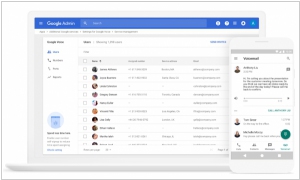
Google is beginning to roll out an enterprise version of its Google Voice service for G Suite users. Google Voice has been a popular service for everyday consumers, offering numerous benefits beyond just having a standard phone number. The enterprise edition of Google Voice seems to provide companies with a way to offer these types of tools, including AI-driven features like voicemail transcription, that employees might already be using and potentially bypassing company guidelines. Administrators can manage and transfer phone numbers, obtain detailed reports and configure call routing functionality. They can also assign phone numbers to departments or employees, providing them with a universal number that isn’t linked to a specific device — making it easier to contact someone as needed. There is also a spam filtering feature, which will likely be helpful in managing waves of robo-calls for various purposes.
2016. Skype for Business is available on Mac

Microsoft unveiled the release of Skype for Business for Mac Preview – the enterprise-oriented version of Skype’s communication services designed for a commercial clientele. IT administrators and users can register to try out the new desktop software, which includes features such as Outlook integration, enhanced security and calls that support up to 250 participants, compared to Skype’s maximum of 25. However, Microsoft indicates that invitations will initially be extended to IT admins before becoming more widely accessible.
2015. Atos acquires unified communications system Unify from Siemens

France-based company Atos Origin announced it is acquiring Unify for $371M to enter the enterprise unified communications market. Its former owner, Siemens AG, now holds a 12% stake in Atos. Atos's acquisition of Unify is expected to be a "win-win" for both companies. Atos is a large services firm and it gains one of the leading products in the emerging WCC sector. Since it is offered as a "service" model, the product should appeal broadly not only to IT purchasers but also to business units, allowing Atos to reach a wider audience.
2015. Microsoft begins rolling out Skype For Business (to replace Lync)
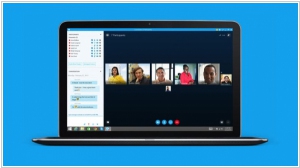
Microsoft’s Skype for Business, designed to replace the company’s older enterprise communication tool Lync, has become publicly available. The company is also now rolling out Skype for Business Online to its Office 365 customers who currently use Lync Online. With Skype for Business, enterprise clients will have access to software that closely resembles Skype’s consumer-facing application in appearance and functionality, but it includes enterprise-grade security and compliance features that allow IT departments to better manage and control the software’s use within an organization. Skype for Business conversations are authenticated through Active Directory and encrypted and IT can oversee user accounts and deployments. The system also integrates with companies’ PBX systems or legacy video conferencing systems, if necessary.
2014. Microsoft enabled video calling between Skype and Lync users

Last year, Microsoft enabled Skype-Lync interoperability with text messaging and audio. Today, the video integration also becomes available. Skype users can now make video calls to contacts on Lync and vice versa, Microsoft announced this morning. To use the new cross-platform video calling feature, you don’t have to do anything differently from before—you just initiate the call the same way you do today. However, video calling is supported only on an updated Lync 2013 client on Android, iOS, or Windows and on Skype for Windows desktop. Skype is now working to broaden this integration to more platforms, beginning with iOS and Android. This update follows a series of deeper integrations between the two products, with the latter set to be rebranded as “Skype for Business” sometime in 2015.
2014. Microsoft will rename Lync as Skype for Business
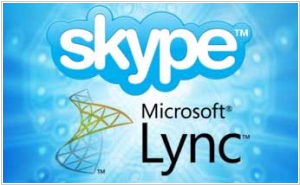
Microsoft will rename its enterprise communications solution Lync to Skype for Business in 2015. This transition will align Lync’s interface with something similar to the current Skype interface. Skype for Business won’t be available until next year. Lync won’t be fully integrated into Skype; instead, it will continue as a separate application. I saw a preview of an early version of the Skype for Business client last week and it indeed seemed quite similar to the current Skype interface. Users in Skype for Business will be able to call regular Skype users from within the application. The rebranding aligns with Microsoft's strategy to "reinvent productivity" for everyone, not just businesses. To achieve this, it aims to provide a consistent experience across services, so both consumers and businesses have similar interactions.













